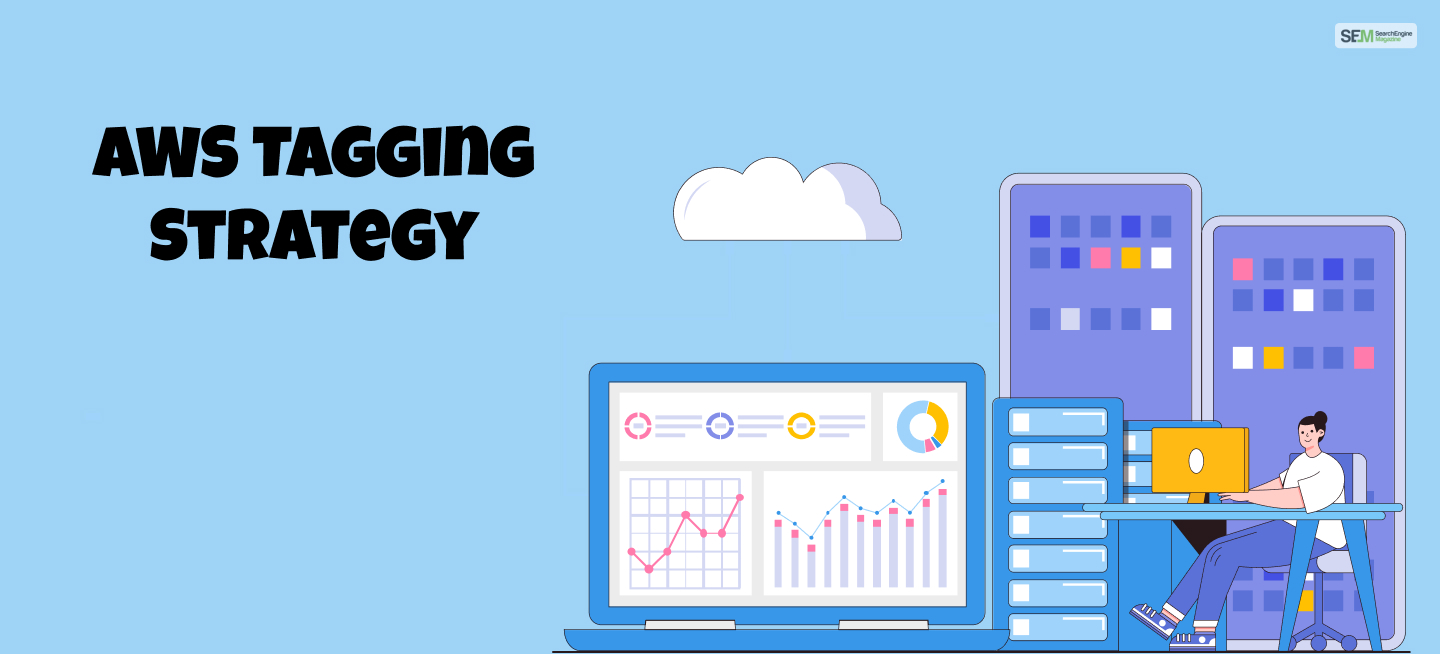How AI Website Builders Are Transforming Seo Strategy For Hosting Companies
Dec 04, 2025

Dec 04, 2025

Dec 04, 2025

Dec 04, 2025

Dec 02, 2025

Dec 01, 2025

Nov 29, 2025

Nov 28, 2025

Nov 28, 2025
Sorry, but nothing matched your search "". Please try again with some different keywords.


AWS tagging is a powerful feature that allows you to assign metadata to your AWS resources in the form of key-value pairs.
Tags can help you manage, identify, organize, search, and filter your resources by purpose, owner, environment, or any other criteria that are relevant to your business.
In this article, we will explain why you need an AWS tagging strategy. Moreover, you will learn how to implement it and what the best practices are to follow regarding AWS managed services.
A tagging strategy is a plan that defines how you will use tags to categorize and manage your AWS resources. A tagging strategy can help you achieve various goals, such as:
You can use tags to track and allocate your AWS costs by different dimensions, such as project, department, application, or environment.
You can also use tags to identify underutilized or unused resources that can be terminated or resized to save money.
You can use tags to enforce access control policies and permissions for your resources based on their tags.
Moreover, you can also use tags to audit and monitor your resources for compliance with your security and regulatory standards.
You can use tags to trigger automated actions and workflows for your resources like backups, snapshots, scaling, patching, and notifications. You can also use tags to group and coordinate your resources across different AWS services and regions.
You can use tags to create logical groups and hierarchies of your resources that reflect your business structure and needs. You can also use tags to search and filter your resources based on their attributes and properties.
To implement a tagging strategy, you need to follow these steps:
You need to decide what types of content tags you want to use and what keys you will assign to them.
For example, you can use tags to capture technical, business, security, or automation information about your resources.
You can also use tag strategies to indicate the lifecycle stage, owner, or function of your resources. Some common tag keys are Name, Project, Environment, CostCenter, Owner, Role, Backup, Compliance, etc.
You need to decide what values you will assign to your tags and what format you will use for them. For example, you can use descriptive, meaningful, and consistent values that are easy to understand and remember.
You can also use standardized, case-sensitive, and alphanumeric values that are compatible with different AWS services and tools. Some common tag value formats are Production, Dev, Test, Finance, Marketing, Alice, Bob, WebServer, Database, etc.
You can use the tagging API operations supported by each AWS service to add, modify, or delete tags for your resources. For example, you can use the CreateTags or DeleteTags API operations for Amazon EC2 instances.
You can use the AWS Tag Editor console to add, modify, or delete tags for multiple resources across different AWS services and regions in a single interface.
You can use the AWS Resource Groups Tagging API to add, modify, or delete tags for multiple resources across different AWS services and regions programmatically. You can also use the API to list, filter, and report on your resources and tags.
You need to monitor and maintain your tags to ensure that they are accurate, consistent, and up-to-date. You can use different tools to monitor and maintain your tags, such as:
You can use AWS Cost Explorer to analyze and visualize your AWS costs by different tag dimensions. You can also use Cost Explorer to create your marketing budget and alerts based on your tags.
You can use AWS CloudTrail to track and audit the changes made to your tags and resources by different users and services.
You can also use CloudTrail to detect and respond to unauthorized activities involving your Cloud Tagging strategy tags and resources. This greatly streamlines your cloud computing efforts with AWS.
You can use AWS Config to record and evaluate the configuration and compliance status of your tags and resources. You can also use Config to enforce and remediate your tagging policies and rules.
You can use AWS Systems Manager to automate and orchestrate various tasks and operations for your tagged resources, such as inventory, patching, backup, compliance, or run commands.
As you create and implement a tagging strategy, you should follow some best practices, such as:
You should add PII or other confidential or sensitive information in tags: Tags are accessible to many AWS services, including billing. Tags are not intended to be used for private or sensitive data.
Apply tags consistently across all resource types: This will help you avoid errors, confusion, and duplication when using tags. It will also make it easier to search, filter, and report on your tags and resources.
AWS Tagging guidelines that support multiple purposes, like managing resource access control, cost tracking, automation, and organization: This will help you maximize the value and utility of your tags. It will also help you avoid creating redundant or conflicting tags for different purposes.
This will help you save time and effort, as well as ensure the accuracy and consistency of your tags. It will also help you avoid human errors and mistakes when applying tags.
This will help you capture more information and details about your resources. It will also help you create more granular and flexible groups and filters for your resources.
Remember that it is easy to change tags to accommodate changing business requirements, but consider the consequences of future changes.
This will help you ensure that your tags are relevant, accurate, and up-to-date. It will also help you identify and resolve any issues or gaps in your tagging strategy.
AWS tagging is a powerful feature that can help you manage, optimize, secure, automate, and organize your AWS resources.
To use tagging effectively, you need to create and implement a tagging strategy that defines how you will use tags to categorize and manage your resources.
You also need to follow some best practices to ensure that your tags are consistent, useful, and reliable. By doing so, you can leverage the full potential and benefits of AWS tagging.
Also read
Mashum Mollah is the feature writer of SEM and an SEO Analyst at iDream Agency. Over the last 3 years, He has successfully developed and implemented online marketing, SEO, and conversion campaigns for 50+ businesses of all sizes. He is the co-founder of SMM.
View all Posts
How AI Website Builders Are Transforming Seo ...
Dec 04, 2025
Pinterest Unblocked: How To Access Socials By...
Dec 04, 2025
Instagram Unblocked: A Guide To Accessing S...
Dec 04, 2025
Gimkit Host: Is This Online Game Hosting Too...
Dec 02, 2025
Driving Growth Through A Smart Product Market...
Dec 01, 2025

